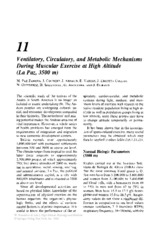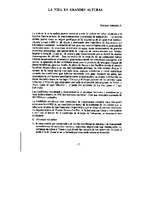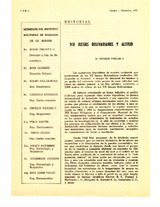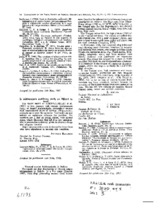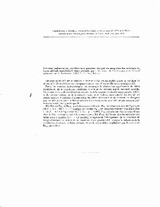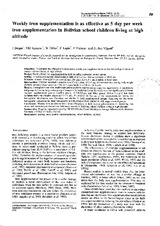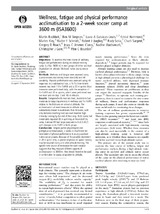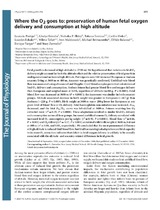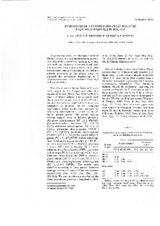Listar Producción científica por título
Mostrando ítems 955-965 de 965
-
Ventilatory, circulatory, and metabolic mechanisms during muscular exercise at high altitude (La Paz, 3500 m)
(Springer-Verlag, 1982)Abstract. The scientific study of the natives of the Andes in South America is no longer an isolated or exotic undertaking (9). The Andean peoples are undergoing cultural, social, and economic development unequaled in ... -
La vida en grandes alturas
(Instituto Boliviano de Biología de Altura, 1988)La vida en la zona andina parece remontar a más de quince mil años, el medio y el hombre fueron asiento de transformaciones y procesos de adaptación. La meseta andina parece tener un origen geológico de la existencia de ... -
La vie humaine en haute altitude : mythes et réalités
(Bull. Soc. Path Ex., 1989)La vie à haute altitude présente des aspects biologiques et médicaux très intéressants. Pour certains pays, comme les pays andins, elle a également des implications socio-économiques. La majorité des villes importantes de ... -
VIII Juegos Bolivarianos y altitud
(Instituto Boliviano de Biología de Altura, 1972-10)Los numerosos deportistas de nuestro continente que participaron en los VII Juegos Bolivarianos realizados últimamente en Panamá, a tiempo de clausurar los mismos y en medio del sofocante calor propio de esas latitudes ... -
Visceral canine leishmaniasis in Bolivia
(Transantions of The Royal Society of Tropical Medicine and Hygiene, 1982-05-11)We report the first description ofr visceral canine leishmaniasis in Bolivia. In a first stage (October 1980), three dogs presenting mucous nasal lesions were found to be infected with Leishmania (numerous amastigotes on ... -
Volumes pulmonaires, ventilation et pression des gaz du sang chez les résidents de haute altitude transférés a basse altitude
(Journal de Physiologie, 1973) -
Weekly iron supplementation is as effective as 5 day per week iron supplementation in Bolivian school children living at high altitude
(European Journal of Clinical Nutrition, 1997)Objective: To compare the efficacy of a daily and a weekly iron supplementation on the hematological status of anemic children living at high altitude. Design: Double blind iron supplementation trial including a placebo ... -
Wellness, fatigue and physical performance acclimatisation to a 2-week soccer camp at 3600 m (ISA3600)
(Br J Sports Med, 2013-09-10)Abstract. Objectives: To examine the time course of wellness, fatigue and performance during an altitude training camp (La Paz, 3600 m) in two groups of either sea-level (Australian) or altitude (Bolivian) native young ... -
Where the O2 goes to : preservation of human fetal oxygen delivery and consumption at high altitude
(The Journal of Physiology, 2009)Fetal growth is decreased at high altitude (> 2700 m). We hypothesized that variation in fetal O2 delivery might account for both the altitude effect and the relative preservation of fetal growth in multigenerational ... -
Zinc and duration of treatment of severe malnutrition
(Lancet, 1995-04-22)In their report of the treatment of severe malnutrition, Khanum and colleagues (Dec 24/31, p 1728) consider providing "additional micronutrients in the future" and in their response, Brewster and Manary (Feb 18, p 453 are ... -
Zymodemes of Trypanosoma cruzi isolated from wild mammals in Bolivia
(Mem. Inst. Oswaldo Cruz, 1988)Trypanosoma cruzi, the etiological agent of Chagas' disease, is a very heterogeneous population of parasites circulating among man, vectors and wild and domestic reservoirs. Until now, few data have been ...

